UNESCO Consultant, Italy, enricofodde@tiscali.it
Cite this as: Fodde, E. 2007 Review of The Architecture of Mud and Qudad DVDs, Internet Archaeology 20. https://doi.org/10.11141/ia.20.6
These DVDs are available from Documentary Educational Resources. Price details and ordering information can be found at the Documentary Educational Resources website: http://www.der.org.
This glimpse of the Hadramaut before nightfall showed that, even if in some ways it is sleepy and insular, one activity continues with irrepressible vitality: building. Everywhere, there are unfinished top floors and herringbone stacks of mud bricks. Many of the older houses and turret-cornered little forts are crumbling - in the last stage of disintegration, the structures look like termite mounds. But new buildings rise all around. It is a cycle of dissolution and rebirth.
Tim Mackintosh-Smith, Yemen: Travels in Dictionary Land, John Murray (London), 1997, p. 175.
This superb documentary by Caterina Borelli is a study of the craftsmanship involved in the construction of the mud brick architecture of the Hadramaut and Do'an valleys of the Yemen, and the cultural aspects of a traditional architecture which incorporates an understanding of buildings which dates back centuries. Expanding the existing knowledge of these earthen heritage properties, examining their behaviour in the local climate and the preservation of traditional craftsmanship as part of a sustainable conservation future are the other prominent concerns of this work.
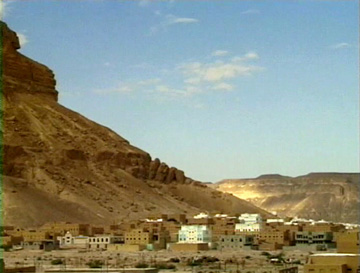
Figure 1. The valley environment in Yemen.
The traditional heritage of the Hadramaut and Do'an regions in the south east of the Yemen are entirely constructed from loam. Throughout the centuries, the population has developed very sophisticated building techniques, and created a unique architectural environment. Spectacular structures such as ten-story mud brick tower houses rise up from green valleys that are surrounded by arid mountains. As in other parts of the world, with the advent of modern materials such as cement, indigenous construction and conservation practices carried out by craftsmen are rendered intellectually invisible by a process similar to the drawing of a veil. The elimination of these practices equals the erosion of centuries of building and conservation culture. As this heritage is rapidly disappearing, as shown by these obsolete construction techniques, this documentary is an excellent archive for future generations.

Figure 2. A mud brick village in the wadi Do'an.
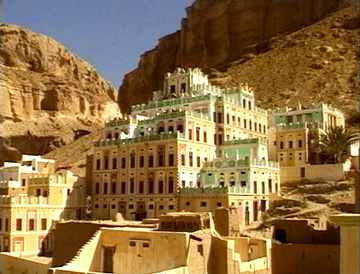
Figure 3. Some of the mud brick buildings can be up to ten-story high.
The documentary relies heavily on the information provided by masons, carpenters, and master builders during several interviews (the featured masons had up to 60 years of experience and becoming a master takes up to 30 years).
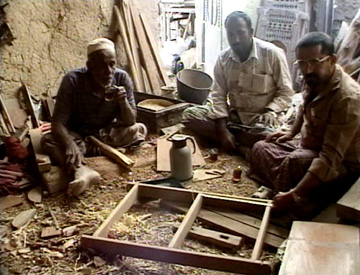
Figure 4. Some of the masons interviewed in the documentary, showing how moulds are constructed.
In interviews throughout the documentary, the masons describe their working techniques and the challenges they face with the introduction of new, imported materials. The documentary is divided in four sections:
The documentary describes the points well and stresses that traditional building techniques are particularly important because they are the result of centuries of development and practice. The recording of craftsmanship is extremely vital, not only because it provides empirical evidence of original practice, but also because it can be directly applied to practical conservation. Employing local materials in construction and repair work has many advantages, not least of which is the fact that the sources for the original materials are close to the site. Furthermore, it is explained that the workmanship necessary for using traditional materials such as mud and lime requires more skill, sensitivity and grounding in traditional culture than what is required for modern materials.
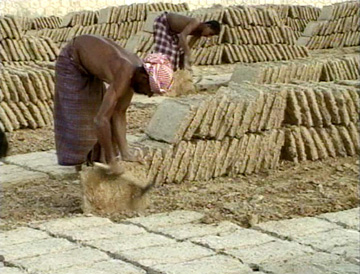
Figure 5. The process of mud brick making.
The documentary ends by explaining that in some villages in these remote valleys in Yemen, emigrant remittances constitute the most important source of income. This money is often used in building, repairing, or enlarging village homes. The construction industry, which employs a wide range of skilled and unskilled workers, and uses a range of materials, has thus become an important part of the village economy. This mechanism of financing construction work also accounts for the half finished state of many buildings, for the work takes place sporadically according to the supply of money sent.
The project was carried out with the consultancy of leading experts on earthen material conservation: Pamela Jerome (Columbia University), Giacomo Chiari (Chief Scientist, Getty Conservation Institute), and Salma Al-Radi (New York University, Institute of Fine Arts).
The work could be of use for those conservators working in the American Southwest, Latin America, Africa, Europe, and Middle East earthen archaeological excavations. Furthermore, it has a strong didactical vocation and, together with another documentary by Caterina Borelli (Qudad, Re-inventing a Tradition, DER, 2004) should be on the shelves of every conservation library (see following review). For further information on the mud brick architecture of the Yemen, see the comprehensive book by Salma Samar Damluji, The Valley of Mud Brick Architecture (Shibam, Tarim, and Wadi Hadramaut), Garmet Editions, Reading, 1992. See also the technical paper by Jerome P, Chiari G, Borelli C, titled The Architecture of Mud: Construction and Repair. Technology in the Hadhramaut Region of Yemen, APT Bulletin, Vol XXX, No 2-3, 1999, pp. 39-48.
The architectural heritage of Yemen is the most extensive in the Arabian Peninsula, and certainly from a formal point of view, one of the richest in the world. This outstanding documentary illustrates qudad, a lime-based plastering technique that was historically widespread in the Arabian Peninsula for the waterproofing of religious and major buildings. The documentary discusses the sudden decline of ethics which occurred in the conservation of the historic buildings of Yemen during the last three decades, and why qudad is today neglected by local craftsmen. The fact that the number of masons who still know this technique is so small makes the work ever so important and necessary. This study of preindustrial materials and manufacturing techniques is documented through an 18 year long project started in 1983 after a collaboration between the Yemeni Government and the Dutch Government.
Both collaborated to preserve a sixteenth century mosque in the town of Rada called the 'Amiriya Madrasa'. As qudad is found in most parts of the building (interior and exterior plaster, floor), the conservation team decided to replicate mixes and types of application. In so doing, several masons were trained so that they could impart knowledge and expertise to the new generations of Rada. By explaining the repair work carried out in the Amiriya, suggestions are made for a more appropriate conservation of the architectural heritage of Yemen.
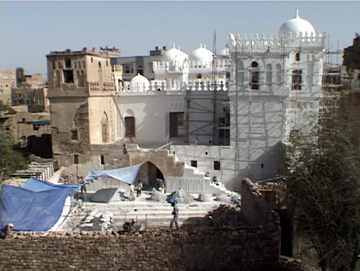
Figure 1. The 'Amariya Madrasa' in Rada, while undergoing conservation.

Figure 2. Detail of the some of the conserved elements in the 'Amariya Madrasa'.
The documentary is divided into three sections. Part one provides an introduction to the history of the site, on the poor state of conservation of the building before the project started, and on project management. Part two explains the materials and tools employed by craftsmen and masons, and part three outlines the conservation work carried out in the building. The production of qudad plaster is time consuming, and the process described in the documentary includes: limestone quarrying (one day), kiln loading (one day), kiln firing (four days), kiln cooling (two days), kiln unloading (one day), lime slaking (the longer the better), mortar mixing (ten weeks). This amounts to a total of over 100 days just to prepare qudad. Only local materials were employed throughout the conservation project, and great importance was given to craftsmanship. Materials, tools, and techniques are explained. For instance, a full description of the following plastering materials and tools is included: limestone (nurah), powder limestone (nurah daqiq), pebbles (karri), volcanic cinders (hushash), mortar mix (khaltah), polishing tools (madla kak), pounding tools (marqam), and planer (ma'rij).
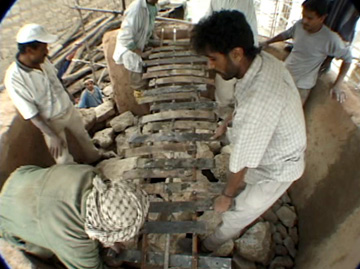
Figure 3. Loading the kiln with limestone.

Figure 4. Firing the kiln.
By using these materials and tools the qudad plaster survives well in damp conditions, but needs a full year before setting. Furthermore, qudad is more expensive than cement because the application of the latter takes one day, whilst the first needs up to three months just to polish. Polishing is a very important aspect of the whole process. Masons explain that "in certain areas it takes up to six or seven months just with water and a polisher. If you do not polish enough, then you start getting cracks". After the last polishing with lime water comes the final phase where you apply "animal fat, from cows for example. It acts as protective layer over the qudad so it does not start cracking." The documentary also stresses how the earthen buildings of the Hadramaut valley are repaired nowadays and what are the consequences of that repair.
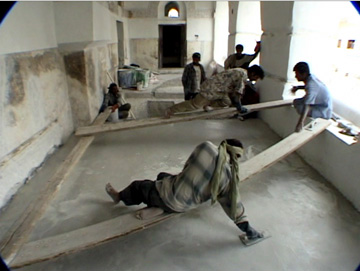
Figure 5. Polishing the floor.

Figure 6. Repairing a wall crack.
This gives an idea of the lack of understanding during the period when new building materials and types started to be heavily introduced in the area. This can be related to the improvement of transportation facilities and to the consequential drop in the cost of purchasing building materials. The local construction industry has a strong motivation for keeping modern materials and methods on the market as these are profitable. At the same time they have little to no interest in using traditional skills and repair methods because these are too "low key and employ local materials" in other words they are far less profitable.
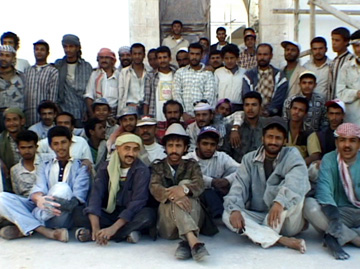
Figure 7. The group of craftsman from Rada, who are now trained to work with qudad as a result of this project.
The work, winner of several film awards, could be of use for archaeologists and conservators working with Middle Eastern archaeological sites and should be in the shelves of every conservation library. For a history of the building and its preservation, see The Amiriya in Rada by Selma Al-Radi, Oxford University Press, 1997 and Amiriya Madrasa: The Conservation of the Mural Paintings by Selma Al-Radi, Roberto Nardi and Chiara Zizola (published 2005 by the CCA, Centro di Conservazione Archeologica). For further information on the mud brick architecture of the Yemen, see the previous documentary by Caterina Borelli (The Architecture of Mud, DER) and the book by Salma Samar Damluji, The Valley of Mud Brick Architecture (Shibam, Tarim, and Wadi Hadramaut), Garmet Editions, Reading, 1992. Both describe the traditional processes of production and the traditional methods for repairing earthen houses in the Hadramaut valley.
Internet Archaeology is an open access journal based in the Department of Archaeology, University of York. Except where otherwise noted, content from this work may be used under the terms of the Creative Commons Attribution 3.0 (CC BY) Unported licence, which permits unrestricted use, distribution, and reproduction in any medium, provided that attribution to the author(s), the title of the work, the Internet Archaeology journal and the relevant URL/DOI are given.
Terms and Conditions | Legal Statements | Privacy Policy | Cookies Policy | Citing Internet Archaeology
Internet Archaeology content is preserved for the long term with the Archaeology Data Service. Help sustain and support open access publication by donating to our Open Access Archaeology Fund.